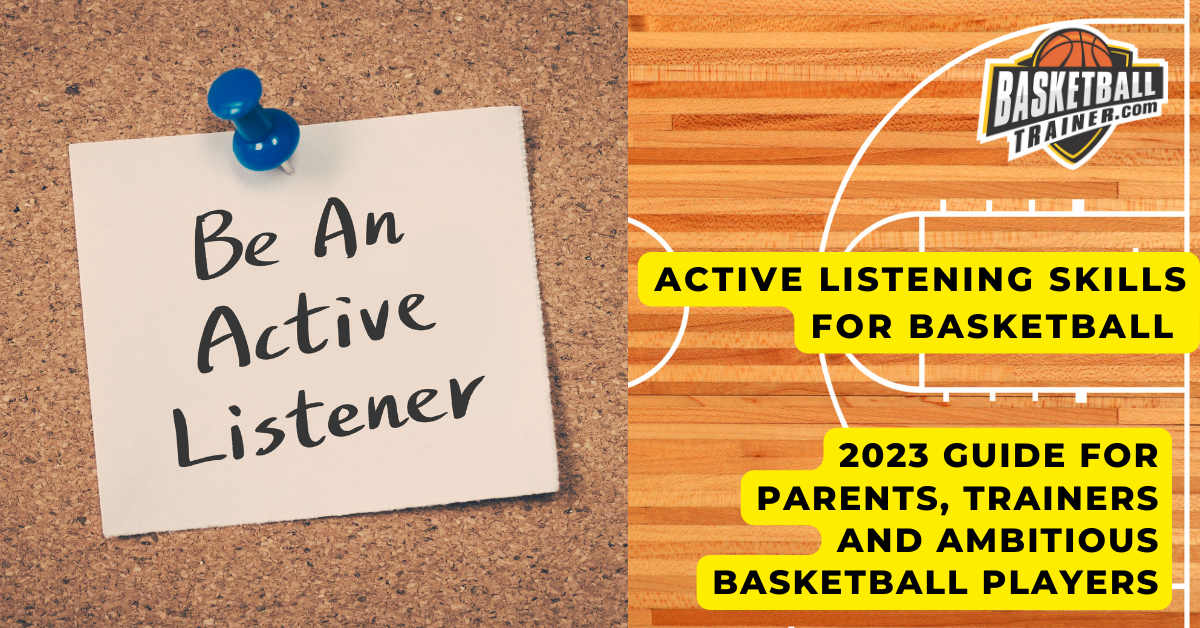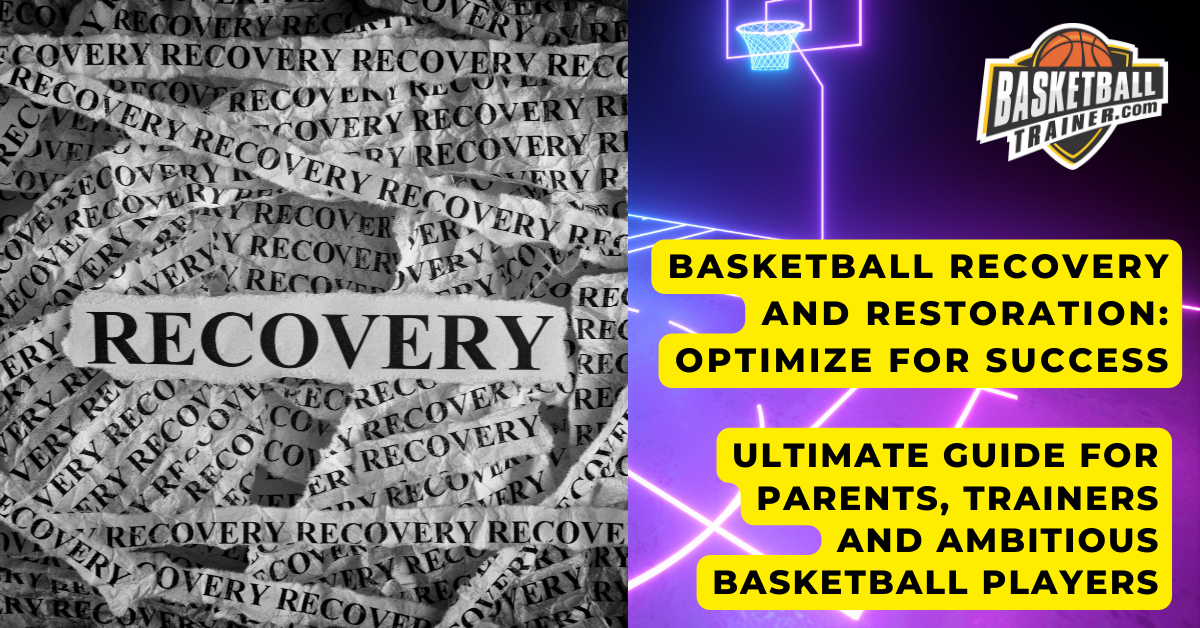
Picture this Basketball Booster Club Leaders and Members: a bustling gymnasium filled with cheering fans, the energy of a high-stakes basketball game pulsing through the air. Behind the scenes, however, lies an equally important aspect of these events – Basketball Booster Club Leadership and Volunteers.
In order to create unforgettable experiences for student athletes and their families, it takes dedication from those who are passionate about supporting local basketball programs. Aspiring leaders in this field will find immense satisfaction by mastering key aspects of booster club management.
This comprehensive guide delves into crucial topics such as volunteer management, organizing events and activities that raise money for your team or school district, marketing and promotion strategies to engage local businesses and community members alike, all while fostering a strong sense of team spirit among players and supporters.
Basketball Booster Club Leadership and Volunteers play an integral role in elevating individual sports programs to new heights – so let’s explore how you can become one of these invaluable contributors today!
Table of Contents:
- Mastering the Art of Being a Top-notch Basketball Booster Club Officer: A Friendly Introduction
- II. Volunteer Management: The Secret Sauce to a Successful Booster Club
- III. Organizing Events and Activities: Mastering the Art of Team Spirit
- IV. Marketing and Promotion: Spreading the Word About Your Sports Booster Club
- Supporting Team Spirit: Creating a Positive and Inclusive Basketball Culture
- FAQs in Relation to Basketball Booster Club Leadership and Volunteers
- Conclusion
Mastering the Art of Being a Top-notch Basketball Booster Club Officer: A Friendly Introduction
Alright, let’s get started.
Before I reveal my game-winning strategies for becoming an exceptional basketball booster club officer, let me provide you with a brief overview of this essential role in supporting your favorite team.
II. Volunteer Management: The Secret Sauce to a Successful Booster Club
Before we explore the ins and outs of volunteer management for basketball booster clubs, let me give you a quick rundown on how to effectively manage your volunteers.
I’ve crafted this easy-to-follow 5-step process just for you:
Step #1: Attract passionate basketball fans who are eager to contribute (your Volunteer Recruitment Strategy).
Step #2: Understand your volunteers’ strengths and interests, then assign tasks accordingly.
Step #3: Keep them motivated. A little appreciation goes a long way – make sure they feel valued and included in the club’s success.
Note: A simple “thank you” or shout-out at meetings can work wonders.
III. Organizing Events and Activities: Mastering the Art of Team Spirit
History of Basketball Booster Clubs
Basketball booster clubs, in particular, gained prominence as basketball grew in popularity during the mid-20th century. As schools and universities expanded their basketball programs, booster clubs played a crucial role in providing the necessary resources to enhance team performance, infrastructure, and player development.
In the early years, basketball booster clubs primarily focused on fundraising activities to generate funds for purchasing equipment, uniforms, and organizing team events. They organized bake sales, car washes, and other community-based initiatives to gather financial support. Additionally, booster clubs were instrumental in arranging transportation for away games, hosting banquets, and promoting team spirit through fan engagement.
Over time, basketball booster clubs evolved to take on broader responsibilities. They began organizing tournaments, coordinating travel arrangements for teams, and implementing scholarships for players. Booster club members often dedicated their time and efforts to creating a supportive and inclusive environment for players, coaches, and fans.
Basketball Volunteers As Leaders
In this section, we’ll explore how to plan and execute team events that will boost morale and foster camaraderie among your basketball players.
Ready? Let’s go.
Organize Team Meetings
- Have regular team meetings. Schedule them regularly and not too far apart to gain traction. Start and end on time.
 Be organized with a meeting agenda that is shared ahead of time. Roberts Rules of Order are a great place to learn meeting decorum and flow. But also be fun. Agendas should include
Be organized with a meeting agenda that is shared ahead of time. Roberts Rules of Order are a great place to learn meeting decorum and flow. But also be fun. Agendas should include- Minutes from last meeting.
- Minutes should include:
- Members attending
- List of Upcoming Events
- Agreed Upon Action List Items and Person Responsible for
- Bullet points of Treasurer’s Reports
- Any Votes
- Fun Stuff!
- Minutes should include:
- Recurring topics.
- Events and their outcomes. After Action Reviews or AARs can help.The purpose of an AAR is to identify strengths, weaknesses, lessons learned, and areas for improvement. You can keep these informal, and make sure they are not take personally.
- Minutes from last meeting.
- Treasurer’s Report
- Guest Speakers
- Coaches
- Athletic Directors
- Past Basketball Booster Club Leaders
- Players Past or Present
- Fundraising Experts
- College Recruiters
- Social Media Marketing Experts
- Sportswear Sales Experts
Planning Team Events: The Key Ingredients
First up, brainstorm event ideas that cater to your team’s interests. Consider organizing a team-building retreat, an awards banquet, or even a fun movie night. The sky’s the limit.
Coordinating Game-Day Activities: It’s Showtime.
Beyond practices and games, there are plenty of opportunities for engaging activities on game day itself. TIP: Set up concession stands with delicious snacks or organize halftime shows featuring local alent – think dance teams or school bands.
Collaborating with Coaches & Players: A Winning Formula
To ensure success in these endeavors, it is essential to work closely with coaches and players when planning events and activities.
List of Event Ideas:
- Fundraising dinners
- Skills clinics for younger players
- Community service projects
- Pep rallies to pump up team spirit
- Social events like bowling nights or laser tag outings
BONUS: Involving the whole team in planning and decision-making will create a sense of ownership, making these activities even more enjoyable and memorable.
Special Initiatives: Going Above & Beyond.
Don’t be scared to push the envelope in terms of creative ideas that could benefit your basketball program.
In summary, organizing exciting events and activities is an essential aspect of being a top-notch basketball booster club officer. The key is creativity, collaboration with coaches and players, and always keeping the best interests of your athletes at heart.
IV. Marketing and Promotion: Spreading the Word About Your Sports Booster Club
Marketing your basketball booster club is crucial for its success, and we’ve got some tips to help you do it effectively.
Ready?
Utilizing Social Media
Step #1: Create dazzling profiles on popular platforms like Facebook, Twitter, Instagram, and LinkedIn. Check out the Macalester College Womens Basketball Team Instagram Page for examples.
Step #2: Share regular updates about basketball games, fundraisers, events – anything that showcases your team spirit.
Hootsuite has a great guide, tailored specifically for sports booster clubs. Our clubs have loved the ease of learning and use of Canva.com for posters, flyers, social media posts and more. The templates are ready to go and include some stock photos as well as you having the ability of uploading photos of the team.
Traditional Marketing Strategies
Tactic #1: Design eye-catching posters or flyers to distribute around town or at school events.
Bonus tip: Partner with local businesses who can display them prominently in their establishments.
Fundraising Events & Community Involvement
- Create buzz by organizing unique fundraising events that will get people talking (and donating).
- Cultivate relationships with other organizations within the community to collaborate on joint initiatives.
- Showcase your student athletes’ achievements through press releases sent to local media outlets – they love a good human interest story.
- Promote game days by partnering with radio stations or newspapers for advertising spots – remember those innovative fundraising ideas we mentioned earlier?
Enhancing Your Club’s Visibility Within the School District
Action #1: Encourage your team members, parents, and volunteers to be ambassadors for the club – word of mouth is powerful.
Action #2: Participate in community events like parades or festivals – deck out a float with banners showcasing your sports booster club’s logo.
Last but not least, don’t forget to celebrate your successes by sharing them on social media and through traditional marketing channels.
This will help build momentum and keep everyone engaged in supporting the basketball team.
Supporting Team Spirit: Creating a Positive and Inclusive Basketball Culture
Team spirit is the lifeblood of any successful basketball team. As a booster club officer, you play an essential role in fostering this vital element. Let’s dive into some actionable strategies to create a positive and inclusive team culture that boosts morale and performance on the court.
Organizing Team-Building Activities and Bonding Events
A united team is a winning team. Regular team-building activities and bonding events, such as movie nights or pizza parties with players’ families, can foster trust, better communication skills, and a stronger sense of unity among teammates. Schedule regular bonding events like movie nights or pizza parties for both players and their families.
Encouraging Active Participation in Cheering and Supporting the Team
Fans can make all the difference during games. Studies show that teams with strong fan support perform better under pressure. Create catchy cheers or design custom merchandise to rally supporters around your squad.
Promoting Sportsmanship Among Players
Sportsmanship goes beyond fair play; it encompasses respect for opponents, coaches, officials, teammates, fans – everyone involved in sports. Sportsmanlike behavior contributes to a positive team culture and improved athletic performance. Encourage players to exhibit sportsmanship both on and off the court.
Creating Inclusive Team Environments
Inclusivity is crucial for fostering camaraderie among teammates. Research shows that inclusive teams are more likely to succeed due to increased trust, collaboration, and commitment. Encourage a variety of perspectives by making sure everyone is welcomed, appreciated, and included in all elements of the team’s journey.
Recognizing Individual Achievements
Acknowledging individual accomplishments boosts morale and motivation. Studies show that recognition can lead to higher levels of engagement, satisfaction, retention, productivity – all essential ingredients for a successful basketball program. Celebrate personal milestones like scoring records or academic achievements at booster club meetings or on social media platforms.
Fostering Camaraderie Among Team Members
Last but not least: camaraderie. Research shows that strong bonds between teammates contribute significantly towards overall success. Create opportunities for shared experiences that strengthen these connections both on and off the court.
Key Takeaway:
As a basketball booster club officer, creating a positive and inclusive team culture is crucial for success. This can be achieved by organizing team-building activities, encouraging fan participation, promoting sportsmanship among players, recognizing individual achievements, fostering camaraderie among teammates and creating an inclusive environment where all players feel valued and respected.
FAQs in Relation to Basketball Booster Club Leadership and Volunteers
What are the roles of a booster club?
The primary roles of a basketball booster club include providing financial support, organizing events and activities, promoting team spirit, marketing the program to attract sponsors and donors, managing volunteers, and supporting coaches in their efforts to develop players both on and off the court. The club also serves as a liaison between parents, players, coaches, school administration, and community members.
What makes a successful booster club?
A successful basketball booster club is characterized by strong leadership skills among its officers; effective volunteer management; well-organized events that engage families and supporters; strategic marketing initiatives that raise awareness about the program; fostering team spirit among athletes; maintaining open communication with all stakeholders involved in the program including parents/guardians.
What is the mission statement for a basketball booster club?
The mission statement for a basketball booster club typically focuses on supporting student-athletes’ development through fundraising efforts that provide resources necessary for success in athletics while promoting academic excellence. It should emphasize creating an inclusive environment where teamwork values are encouraged within teams as well.
Frequently Asked Questions about Basketball Booster Clubs
1. Should I join the basketball booster club? Joining the basketball booster club can be a great way to support the team and contribute to their success. As a member, you’ll have the opportunity to participate in various activities, promote team spirit, and assist in fundraising efforts. Moreover, you’ll be able to network with other basketball enthusiasts and make a positive impact on the players’ experience.
2. What are the responsibilities of a basketball booster club? The responsibilities of a basketball booster club may vary depending on the specific club and its bylaws. Generally, booster club members are involved in organizing and coordinating various activities such as fundraising events, team promotions, volunteer coordination, managing finances, and providing support to the basketball program. The specific roles and responsibilities can be outlined in the club’s bylaws or through discussions among the members.
3. How do I benefit from joining a basketball booster club? Joining a basketball booster club offers several benefits. Firstly, you become an integral part of the team’s support system, contributing to their success on and off the court. Additionally, you’ll have the opportunity to connect with fellow basketball enthusiasts, build relationships, and expand your network. Participating in club activities also allows you to enhance your organizational skills, leadership abilities, and community involvement.
4. How do we form a basketball booster club? To form a basketball booster club, follow these general steps:
- Gather interested individuals: Find fellow parents, fans, and supporters who are enthusiastic about forming a booster club.
- Define the club’s purpose: Clearly outline the objectives, goals, and mission of the booster club.
- Establish bylaws: Develop bylaws that outline the club’s structure, membership criteria, officer roles, financial management, and decision-making processes.
- File necessary paperwork: Consult with local authorities or educational institutions to determine any legal requirements or paperwork needed to register the booster club.
- Elect officers: Hold elections to select club officers, such as president, vice president, treasurer, and secretary.
- Plan activities: Create a calendar of events, fundraisers, meetings, and other activities that align with the club’s mission and goals.
5. How do we deal with problems in the basketball booster club? When problems arise within a basketball booster club, it’s essential to address them proactively and collaboratively. Consider the following steps:
- Open communication: Encourage open and honest communication among club members to address concerns and conflicts.
- Mediation or facilitation: If necessary, seek the assistance of a neutral third party to mediate conflicts or facilitate discussions.
- Review and revise bylaws: Assess whether any issues stem from inadequate bylaws or organizational structure, and make necessary revisions.
- Committee involvement: Form committees to handle specific tasks or areas of concern within the club, such as finance, promotions, or volunteer coordination.
- Regular evaluations: Conduct periodic evaluations of club operations, financial management, and member satisfaction to identify areas for improvement.
6. What are common complaints about basketball booster clubs? While each basketball booster club is unique, some common complaints may include:
- Lack of communication: Some members may feel that important information is not effectively communicated, leading to misunderstandings or missed opportunities.
- Unequal distribution of responsibilities: In certain cases, there might be a perception that a few individuals are shouldering the majority of the workload while others contribute less.
- Financial transparency: Transparency in financial matters is crucial. Lack of clarity or accountability regarding funds raised and expenses incurred can be a source of concern.
- Decision-making processes: If decisions are made without sufficient input from the membership or if there is a lack of democratic practices, it can lead to dissatisfaction among members.
- Conflict of interest: Instances where personal interests interfere with the club’s objectives can cause friction and undermine the club’s integrity.
7. How can we address financial matters in the basketball booster club? To ensure proper management of finances in a basketball booster club, consider the following:
- Establish a transparent financial system: Clearly document income and expenses, maintain accurate records, and provide regular financial reports to the club members.
- Implement financial controls: Define procedures for approving and tracking expenses, handling cash, and conducting audits to prevent financial mismanagement.
- Seek professional guidance if needed: If managing finances becomes complex, consider consulting with a financial advisor or accountant to ensure compliance and best practices.
- Involve members in budgeting: Encourage input from club members when creating budgets and setting fundraising goals to promote transparency and inclusivity.
8. How often are basketball booster club meetings held? The frequency of basketball booster club meetings can vary depending on the needs and activities of the club. Typically, clubs aim to hold regular meetings, such as monthly or quarterly gatherings, to discuss ongoing initiatives, provide updates, and make important decisions. It’s important to establish a meeting schedule that works for the majority of the members and allows for effective communication and coordination.
9. Can I promote sportswear or merchandise through the basketball booster club? Yes, promoting sportswear or merchandise can be a valuable fundraising opportunity for a basketball booster club. Many clubs offer branded apparel, accessories, or other team-related merchandise for sale. By partnering with reputable suppliers, setting fair prices, and effectively promoting these items, booster clubs can generate revenue to support the basketball program and enhance team spirit among fans.
10. Is an audit necessary for a basketball booster club? While the need for an audit may vary based on local regulations and the club’s financial activities, conducting periodic audits is generally advisable. Audits help ensure financial transparency, identify potential discrepancies, and maintain the trust and confidence of club members and stakeholders. If unsure about the requirements or best practices, it’s recommended to consult with a financial professional or seek guidance from local authorities.
Please note that these FAQs provide general information and guidance. It’s important to refer to your specific basketball booster club’s bylaws and regulations for detailed and accurate information regarding your club’s operations.
If you have any further questions or need additional assistance, feel free to reach out to the basketball booster club leadership or the designated contact persons.
Conclusion
In conclusion, mastering the art of being a top-notch basketball booster club officer involves volunteer management, organizing events and activities, marketing and promotion, and supporting team spirit. By effectively managing volunteers, creating engaging events and activities, promoting the club through various channels, and fostering team spirit among players and families alike, you can help your basketball booster club thrive.
If you’re looking to take your skills as a basketball player or coach to the next level while also supporting your local community’s youth athletics programs, consider partnering with Basketball Trainer. Our team of experienced trainers can help you develop new skills on the court while also providing valuable resources for building leadership skills off-court as well.
- Basketball Organization Knowledge
- Organizing Events & Activities
- Marketing & Promotion Strategies
- Fostering Team Spirit Among Players & Families Alike
- Leadership Steps for Players and Coaches










